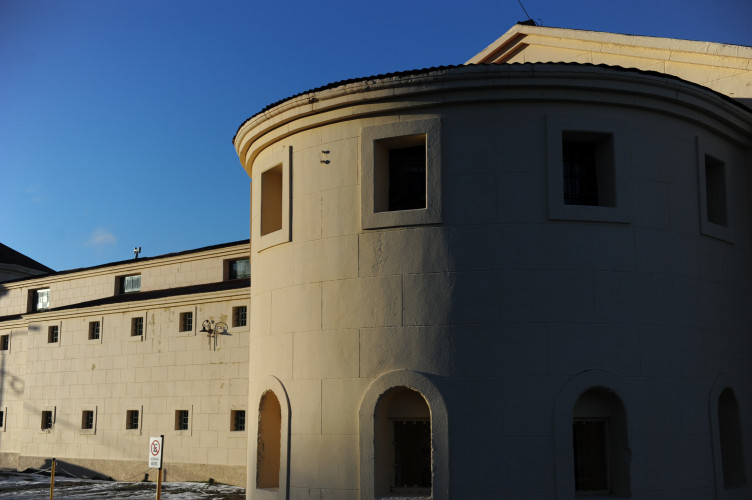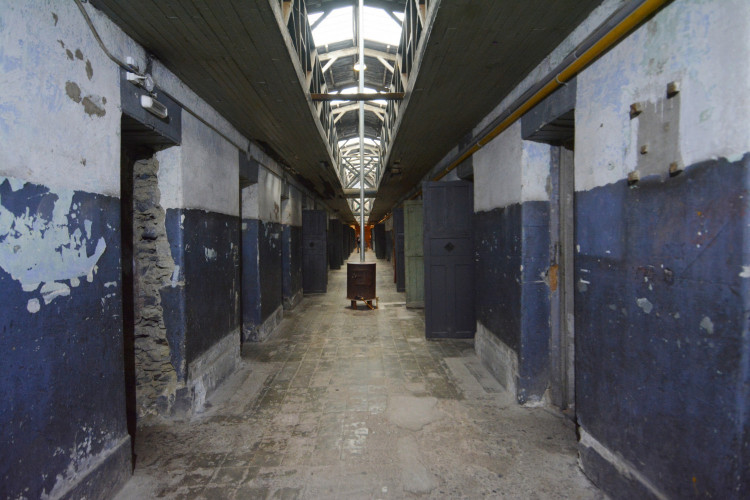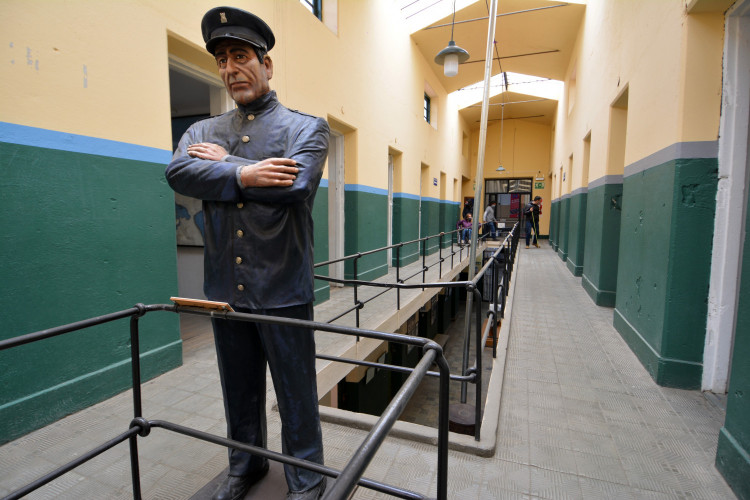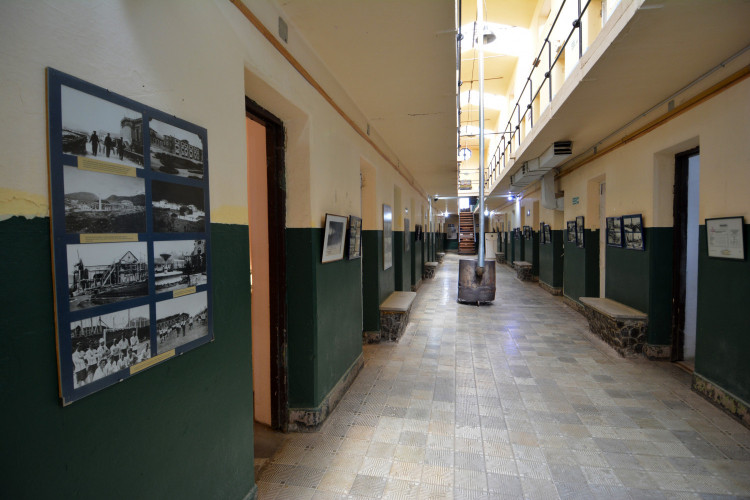Walking around the city, you will find historical sites that bring you closer to Ushuaia's past and its stories, myths and legends.
When
In the city center you can discover the history of Tierra del Fuego by visiting the following places:
Museum of the End of the World
This museum is divided into two headquarters, the main one is located at 173 Maipú Avenue, in an old building formerly used by the National Bank. The annex is located three blocks down the same street (Maipú 465), on the site that housed the former Government House and Legislature.
The exhibits cover the history of Tierra del Fuego, from the life of the native tribes and the first European expeditions to the settlers, navigators and adventurers who contributed to the development of the island. The museum houses archaeological remains, reproductions of indigenous utensils, photographs and documents from the 19th century related to scientific expeditions and shipwrecks, as well as a large exhibition of birds from the area.
The local history of Ushuaia also has its space, with collections of objects and memorabilia belonging to the pioneers who arrived on the island between the late nineteenth and early twentieth centuries.
A visit is recommended if you want to learn more about the protagonists of the history of Tierra del Fuego.
More information at https://mfm.tierradelfuego.gob.ar/ and Facebook: Museo del Fin del Mundo
Ushuaia Maritime Museum and former Prison
An important part of Ushuaia's history is related to its past as a penal colony. In 1902 the construction of the building began, with inmate labor. The Military Prison and Prison for Recidivists operated until 1947. During the decades in which it was in service, the forced labor of the prisoners contributed to supply the town with firewood, stones and construction materials, for which they traveled the route now recreated by the End of the World Train.
The prison was the scene of numerous stories that survived its closure. Among the famous people who were locked up in its walls are the journalist and writer Ricardo Rojas, the anarchist of Ukrainian origin Simón Radowitsky, and the serial killer Cayetano Santos Godino, popularly known as "el petiso orejudo" (big-eared shorty).
This hard period of Fuegian history is recreated today in the historical pavilion that is open to the public inside the museum. There, visitors are able to walk through the narrow, cold cells and learn about the harsh conditions in which prisoners lived at that time. Indeed, the Ushuaia prison was nicknamed "Argentina's Alcatrazz", alluding to its reputation as a sinister and remote place.
In addition to the history of the prison, the building houses a wing dedicated to maritime explorations, shipwrecks and expeditions in the area of Tierra del Fuego and the South Atlantic. The native peoples also have a space, where models of their boats and utensils are exhibited. The Museo Marítimo y del Presidio is located inside an area belonging to the Argentine Navy, where the Ushuaia Naval Base is located.
More information at: museomaritimo.com and Facebook: Museo Marítimo y del Presidio
City Museum
The life of the pioneers is exhibited in displays that show stories, memories and objects that belonged to the first settlers in Ushuaia. This museum is located in the old residence of the Pena family, on Maipú Avenue and Pluschow Street, and is part of the "Old Town Project", whose objective is the preservation of the local historical patrimony.
Casa Beban Museum
The house that belonged to Mr. Fortunato Beban, a pioneer, is now an exhibition center. Manufactured in Sweden, the blocks of the house were transported by ship and arrived at the Ushuaia dock in 1902. Its original location was on Maipú Avenue, between 9 de Julio and Juan Manuel de Rosas Street.
Today it is located in the Paseo de las Rosas, on Maipú Avenue and Pluschow Street, and is open to the general public as part of the "Old Town Project".
Pensar Malvinas Museum
Inaugurated on April 2, 2012 in the Torres house, located in the Pueblo Viejo sector of the Paseo de las Rosas, this space exhibits photographic material, informative panels, and historical elements related to the war in the Malvinas Islands, which took place in 1982.
City Tour
A different way to discover Ushuaia and its historic places is taking a guided tour. Click HERE for more information.
Museums and historical sites in Ushuaia
Walking around the city, you will find historical sites that bring you closer to Ushuaia's past and its stories, myths and legends.
When
In the city center you can discover the history of Tierra del Fuego by visiting the following places:
Museum of the End of the World
This museum is divided into two headquarters, the main one is located at 173 Maipú Avenue, in an old building formerly used by the National Bank. The annex is located three blocks down the same street (Maipú 465), on the site that housed the former Government House and Legislature.
The exhibits cover the history of Tierra del Fuego, from the life of the native tribes and the first European expeditions to the settlers, navigators and adventurers who contributed to the development of the island. The museum houses archaeological remains, reproductions of indigenous utensils, photographs and documents from the 19th century related to scientific expeditions and shipwrecks, as well as a large exhibition of birds from the area.
The local history of Ushuaia also has its space, with collections of objects and memorabilia belonging to the pioneers who arrived on the island between the late nineteenth and early twentieth centuries.
A visit is recommended if you want to learn more about the protagonists of the history of Tierra del Fuego.
More information at https://mfm.tierradelfuego.gob.ar/ and Facebook: Museo del Fin del Mundo
Ushuaia Maritime Museum and former Prison
An important part of Ushuaia's history is related to its past as a penal colony. In 1902 the construction of the building began, with inmate labor. The Military Prison and Prison for Recidivists operated until 1947. During the decades in which it was in service, the forced labor of the prisoners contributed to supply the town with firewood, stones and construction materials, for which they traveled the route now recreated by the End of the World Train.
The prison was the scene of numerous stories that survived its closure. Among the famous people who were locked up in its walls are the journalist and writer Ricardo Rojas, the anarchist of Ukrainian origin Simón Radowitsky, and the serial killer Cayetano Santos Godino, popularly known as "el petiso orejudo" (big-eared shorty).
This hard period of Fuegian history is recreated today in the historical pavilion that is open to the public inside the museum. There, visitors are able to walk through the narrow, cold cells and learn about the harsh conditions in which prisoners lived at that time. Indeed, the Ushuaia prison was nicknamed "Argentina's Alcatrazz", alluding to its reputation as a sinister and remote place.
In addition to the history of the prison, the building houses a wing dedicated to maritime explorations, shipwrecks and expeditions in the area of Tierra del Fuego and the South Atlantic. The native peoples also have a space, where models of their boats and utensils are exhibited. The Museo Marítimo y del Presidio is located inside an area belonging to the Argentine Navy, where the Ushuaia Naval Base is located.
More information at: museomaritimo.com and Facebook: Museo Marítimo y del Presidio
City Museum
The life of the pioneers is exhibited in displays that show stories, memories and objects that belonged to the first settlers in Ushuaia. This museum is located in the old residence of the Pena family, on Maipú Avenue and Pluschow Street, and is part of the "Old Town Project", whose objective is the preservation of the local historical patrimony.
Casa Beban Museum
The house that belonged to Mr. Fortunato Beban, a pioneer, is now an exhibition center. Manufactured in Sweden, the blocks of the house were transported by ship and arrived at the Ushuaia dock in 1902. Its original location was on Maipú Avenue, between 9 de Julio and Juan Manuel de Rosas Street.
Today it is located in the Paseo de las Rosas, on Maipú Avenue and Pluschow Street, and is open to the general public as part of the "Old Town Project".
Pensar Malvinas Museum
Inaugurated on April 2, 2012 in the Torres house, located in the Pueblo Viejo sector of the Paseo de las Rosas, this space exhibits photographic material, informative panels, and historical elements related to the war in the Malvinas Islands, which took place in 1982.
City Tour
A different way to discover Ushuaia and its historic places is taking a guided tour. Click HERE for more information.










